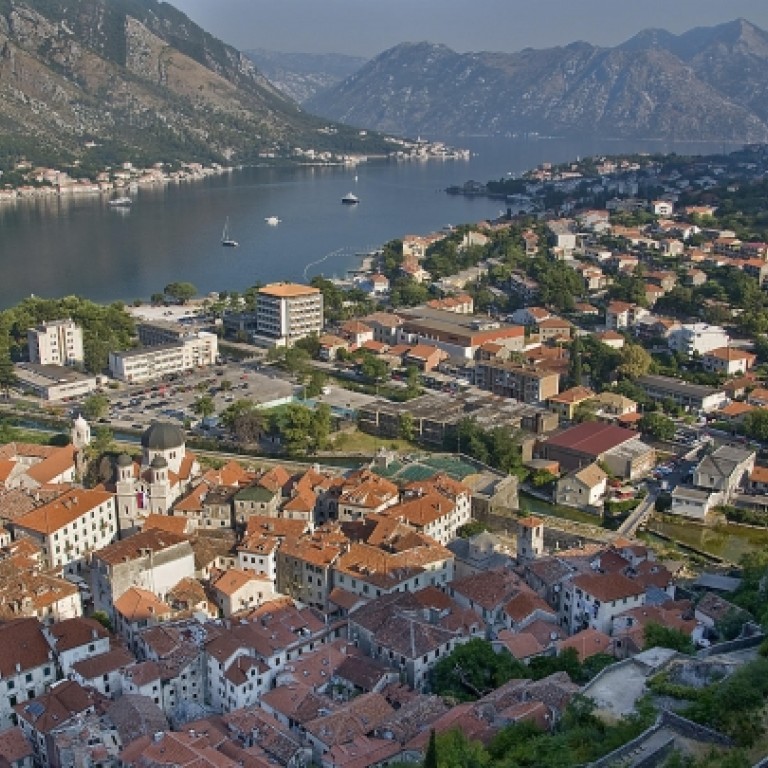
The full Montenegro
Nestled in the mountains of Europe's second newest country, Kotor may be tiny but, at carnival time it's fit to burst, writes Tim Pile
The road to Montenegro from neighbouring Bosnia slices through a surreal landscape of rugged mountains, gaping canyons and cobalt blue lakes. Vehicles edge along precarious stretches of single-lane highway hemmed in by overhanging cliffs on one side and a sheer precipice on the other.
I should be enjoying the stunning scenery but it's hard to concentrate. The bus driver has a mobile phone in his left hand, a cigarette in the right and is using his elbows to guide the steering wheel. Strange thoughts cross your mind at such moments; what if he's calling a mechanic for advice about overheating brakes?
There's a brief pause in the capital, Podgorica, presumably so that our dexterous driver can buy more smokes and top up his sim card. Then the roller coaster begins again. The hairpin bends become sharper; the switchbacks steeper and it's a relief to reach my destination in one piece.
Having expected little-known Montenegro to sneak under the traveller's radar, it comes as a surprise to find the town of Kotor teeming with tourists. Fellow passengers warn that hotels are likely to be full and suggest I look for a "dragon" when we arrive at the bus station.
Either drugs are more prevalent on the Adriatic than I realised or something has been lost in translation. Mythical beasts are thin on the dusty ground but a burly Balkan approaches and asks if I need somewhere to stay.
Well, actually, he just says: "Come."
Dragan Gogov hails from Serbia but has spent the past 25 years in what is now Montenegro. We lack a common language so he gestures towards an ancient car, which starts at the third attempt, and we limp into the traffic.

Kotor Carnival is 24 hours away and vacant rooms are as elusive as, well, dragons. My enterprising host has a full house but that doesn't stop him from renting me his sofa for €20 (HK$200) a night. The living room is adorned with sepia family photos and religious paraphernalia. In fact, Gogov's religion turns out to be the only orthodox thing about him.
Beggars can't be choosers during carnival week and the deal is cemented with a handshake and a glass of plum brandy. Even Gogov's aggressive-looking dog wags its tail. I'm one of the family - for a few days at least. The sofa may be rather shabby but the vista from the patio is in a league of its own.
The Bay of Kotor is a dead ringer for a Norwegian fjord. Limestone cliffs tumble into glassy waters and across the strait lies a world heritage-designated walled town dating from the 12th century. "Little Dubrovnik," as Kotor is known, has the feel of its near neighbour but without the crowds. Until carnival time, that is.
Montenegro is Europe's youngest country after Kosovo, having declared independence from Serbia in 2006. The pocket-sized nation has a population of just 600,000 and they all seem to be in Kotor and dressed for a party. The region is dependent on tourism and the carnival is a good example of how the pragmatic townsfolk balance centuries-old customs with entrepreneurial flair.
The event traditionally takes place in wet and windy February but nowadays residents throw on their costumes for a repeat performance in August. The weather is warmer and there's no shortage of deep-pocketed tourists to enjoy the spectacle - and boost local coffers.
The big day arrives and I'm up at dawn - not in a kid-at-Christmas way but because I've got a mountain to climb and want to be back at sea level before the fierce Montenegrin sun makes exertion hazardous. The city walls, which were built to keep marauding Ottomans at arm's length, zigzag up the steep slopes of Mount Lovcen as far as the eye can see.
A straggly line of hikers traipse upwards to St Ivan's Fortress. Those with a head for heights can continue onwards to the ruined Castle of Saint John; 1,350 steps in all. The view from the fortifications is sublime. The entire bay unfurls like a giant map below and the terracotta-tinted old town is daubed with morning light.
In the distance a cruise ship hums across the gulf - a reminder that tonight, Kotor will be the epicentre of the Adriatic. The sun fizzes higher and soon it's time to clamber down and make for the lake.

Kotor's status as "no longer a secret" becomes apparent as we tread water and Gogov points to a row of villas sprouting along the hillside.
"Russian, British, Russian, British, Irish, Russian."
It's not the invasion of foreign second-home owners that bothers my innkeeper but the escalating rates at other guest houses. Gogov is content to charge €30 for a room during the high season but feels that his rivals are getting greedy. He nods dismissively at an attractive boutique residence on the waterfront.
"One night, €100," he tuts. "Too expensive."
The price seems more realistic than €30 and will surely become the norm as the Montenegrin coast continues to increase in popularity. I suggest that Gogov triple his tariff - the minute I leave.
It's the evening of the carnival parade. The narrow cobbled lanes echo to the sound of garrulous chatter and there are more masks than at a Batman convention. Dancers, drummers and decorated floats get the ball rolling while the police fight a losing battle to keep the procession route clear of fancy-dressed revellers.
Fearless spectators seek vantage points in trees and TV cameramen jostle for position with local dignitaries and cruise line passengers. It's frenetic, flamboyant and fun and I'm sorely tempted when Gogov recommends coming back for the Kotorski Karneval in February.
I wonder how much he charges for his sofa in the low season.

